Meet our SPIN fellows and projects
Research results
Ca’ Foscari University promotes international research attracting outstanding talents and financially supporting their ideas. For this purpose, in 2018 it has launched a new initiative - SPIN Supporting Principal INvestigators. The programme is structured into two measures:
- Measure 1 - ERC designed to support post-doc researchers from anywhere in the world who commit to submitting an ERC project proposal with Ca’ Foscari as Host Institution. Applications are welcome in any of the ERC categories (Starting, Consolidator or Advanced)
- Measure 2 – Standard projects addressed to applicants proposing collaborative research proposals and already holding a permanent position at Ca’ Foscari.
Calls for proposals are published on a yearly basis at the webpage "Supporting Principal INvestigators (SPIN)".
The National and Ca' Foscari Research Office is available to provide guidance, information and support in the preparation of project proposals.
Funded projects

Silvia Burini
Arts in Exile: a Cartography of Russian Diaspora
Department of Philosophy and Cultural Heritage
The project studies the cultural emigration of Russian artists and intelligentia, who disagreed with Russia’s invasion of Ukraine in 2022 and thus left their country. As a result of their desplacement, an alternative and transnational space of resistence has emerged. Mappin and understanding this cultural phenomenon with ist spaces, narratives and transfer also enables us to examine existing concepts of national identity and collective memory.
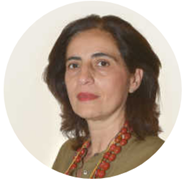
Caterina Carpinato
Writing, Reading and Speaking Greek in Venice (16th-XXth Centuries)
Department of Humanities
The team will study some examples of printed texts published in early Modern Greek in Venice (from the first half of the 16th century to the end of the 19th century) in order to focus on how the heritage connected with ancient Greece (especially Homer but also the Latin writers Ovid and Justinus) was rewritten and reinterpreted. A mention will be reserved for the Greek translation of Boccaccio's Teseida and the rimada celebrating Alexander the Great. From the editorial context of the books destined for the Greek-speaking community, active in the lagoon until the second half of the 19th century, some important testimonies of spoken Greek also emerge, present in the dialogues included within the bilingual vocabularies necessary for basic communication between Italians and Greeks. Through these testimonies (translations, re-elaborations, re-writings, tools for linguistic use), we observe a variegated cultural reality that deserves to be interpreted within the specific historical, economic and artistic context of the Serenissima, which over the long period under examination was an international capital and a hub for commercial, political, artistic, linguistic and literary interconnections.The study path shared by the team members will form the basis for the design of a teaching activity (PCTO), the organisation of a workshop and the production of an open access volume on the project topic. The aim is to offer a different approach to the study of Greek, through an unconventional linguistic and cultural approach.
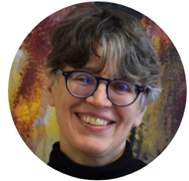
Stefania De Vido
Ancient Landscapes: Mapping the Historical Dynamics of Ancient Sicily
Department of Humanities
The AncLa project comprises the development and in-depth critical analysis of the MAS 1.0 (Mapping Ancient Sicily) pilot project (funded with a research grant from the DSU in 2022/2023). MAS had as its objective the development of a digital prototype of dynamic cartography on a pilot area (Aetna area: Sample Area 1) in the Archaic period (8th-6th centuries BCE): https://storymaps.arcgis.com/stories/b57dce843510476d9053050f54a7577d.
The AncLa project is intended to: deepen the theoretical aspects of Deep Mapping, developing a theoretical reference model and improving the tool developed for the MAS 1.0 project extend the chronological span of Sample Area 1 to the creation of the Roman provincia identify the physical and anthropic markers and apply the model MAS on another area identified as Western Sicily (Sample Area 2: AncLa 2) create a shared vocabulary for the purpose of describing a historical landscape with reference to the chronological span between the 8th-3rd centuries BCE; create a common and general bibliography (via ZOTERO) on Deep Mapping in order to provide a status quaestionis on the methodology; create the digital maps for the two selected areas and periods, verifying the suitability of the prototype in varying areas/periods; interpret the digital maps, with a specific focus on transformation processes of a given landscape.
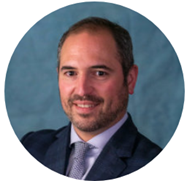
Florencio Del Barrio De La Rosa
Mapping vernacular universals: a dynamic map of language innovations in 21st century Spanish
Department of Linguistics and Comparative Cultural Studies
Language use in the new digital discourses and social networks is less inhibited by normative pressure. Consequently, digital genres open a privileged observational window to vernacular universals. Vernacular universals are defined as natural tendencies and systematic regularities in language development. The present project focuses on how vernacular innovations arise and spread through speech communities shaped by both geographical and virtual space. 21st century Spanish offers an unequal opportunity to observe the ongoing language change, the emergence of linguistic innovations and their diffusion through space. The study of intralinguistic variation would allow to outline a catalogue of non-standard structure in Spanish (i.e. Hispanoversals) and contribute therefore to better understand the universality of vernacular universals in world languages. By approaching the study of vernacular universals from a dialectological perspective, MAPAS21 attempts to answer the following research question posed by Chambers (2004): do non-standard innovations diffuse outward from a focal area? And, if so, case which model of spatial diffusion fits better to explain their distribution? Contrarily, do vernacular forms emerge independently as natural structural tendencies of language and consequently display a multifocal distribution? In order to answer this question, it is indispensable to develop a protocol for extracting data from digital media and for automatically projecting them onto a dynamic and interactive map. The third millennium witnesses the “vernacular turn” in modern linguistic theorizing and the creation of a dynamic and interactive map may help to understand how vernacular universals arise and develop through speech communities. This project puts forward a new approach to dialectology and language change.

Matteo Feltracco
Contaminants in snOw, Soil and perMafrost: On the trace of the local impact in the Arctic System
Department of Environmental Sciences, Informatics and Statistics
Contaminants of emerging concern (CECs) in the Arctic are increasingly recognized for their potential environmental and health impacts. Researchers, experts in the fields and several organization highlight the need to investigate high-production volume chemicals used in rubber and plastic manufacturing, as vehicle tires and other products release numerous chemicals into the environment. Among these, benzothiazoles (BTHs) from rubber tire wear are prevalent and known to be toxic to animals and humans, yet their effects on aquatic and soil organisms are underexplored. Additionally, bisphenols (BPs), used as plastic monomers and additives, are of concern, particularly Bisphenol-A (BPA), which is known for its endocrine-disrupting properties. The COSMOS project aims to characterize the emitted CECs. It will screen for tire-derived compounds, plastic additives, and anti-corrosive agents near trafficked roads in Longyearbyen, comparing them with less impacted roads in NyÅlesund. This gradient of traffic areas will help discriminate between local and LRAT sources and assess their impact on the cryosphere and soil systems. Innovative analytical methods using liquid chromatography coupled with tandem mass spectrometry will be developed to quantify target CECs in snow, soil, and permafrost. COSMOS will focus on eight benzothiazoles, thirteen bisphenols, eleven diphenylamine antioxidants, and six benzotriazoles, addressing the information gap on these CECs in Svalbard and their potential exposure to local populations. Employing suspect and non-target screening with high-resolution mass spectrometry (HRMS), COSMOS aims to uncover new contaminants and comprehensively assess their environmental impact, leading to the discovery and quantification of new CECs.

Ivan Matijasic
Global Thucydides: Editors, Readers, Translators (1848-2024)
Department of Humanities
The project will offer the first mapping of the reception of Thucydides’ Peloponnesian War outside the Western tradition. Particular attention will be paid to the times, modes, and reasons that led this founding text of the Western tradition to become, over the last two centuries, an object of study within cultures very different from each other, from Africa to the Americas, from Eastern Europe to the Caucasus, from the Near to the Far East. To tackle such a large research program, the PI and the partners of the project will coordinate a group of 15-20 scholars from European and non-European countries.
In terms of research methods, translations will be central, a privileged terrain for deepening the encounter between texts and cultures. Special attention will be given to female translators and scholars have worked on Thucydides in the past two centuries. Each participant will explore the trends of Thucydides’ reception within specific geographical areas. They will conduct a philologic-linguistic analysis of the translations published in the areas under consideration, but also consider the biographical profiles of the translators and the motivations behind their work. In general, the project will include the analysis of the cultural, historical, and political contexts in which Thucydides was translated, read, and studied between the 19th and 21st cent. The chronological frame (1848-2024) rests on the periodizing coordinates proposed by Eric Hobsbawm, the processes of political, economic, and cultural integration on a global scale since the mid-19th century, and the history of classical scholarship in Europe and beyond.
The project stands out as a novelty in Thucydides studies on an international scale. It aims at placing itself as an innovative project not only within the field of classics but also of history of international relations, translation studies, and cultural global history.

Francesca Masi
Disclosing the Wonder: The Impact of Aristotle's Philosophy of Biology on Environmental Issues
Department of Philosophy and Cultural Heritage
The project aims at bringing Aristotle’s biological treatises at the forefront research of the discussion on environmental ethics. To this end, a network of internationally renowned scholars working on Aristotle’s philosophy of nature and biology at a national and international level will be set up. Given its interdisciplinary nature, the project will also make use of the expertise of Ca’ Foscari scholars of History of Philosophy, History and Philosophy of Science, and of the support of the Center for Environmental Humanities NICHE and the Unesco Chair on Water Heritage and Sustainable Development. Furthermore, new collaborative relationships with the universities belonging to the EUTOPIA alliance (University of Warwick and Vrije Universiteit Brussels) will be implemented. The main theme of the project will be explored in the framework of a broader reassessment of the theoretical scope of Aristotle’s biological corpus. The chosen working methodology is a text-based approach, informed by the historical and cultural context and attentive to the exegetical debate and the contemporary discussions. To this end, a cycle of seminars of close reading of Aristotle’s biological texts and a series of conferences on their potential impact on today’s views of natural environment will be organized on a regular basis. The new reading of Aristotle’s biological corpus will radically change the state-of-the-art, by contributing both to reassess their role in Aristotle’s philosophical system and to clarify his view on the living realm. The articles that will result from the research and the conference proceedings will be the first studies ever published in the research field of ancient philosophy on today’s significance of Aristotle's biology for environmental issues.
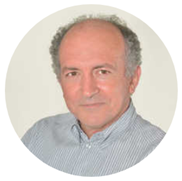
Luciano Pezzolo
The Venetian population. A city and its activities in mid-eighteenth century
Department of Humanities
The research project involves the transcription and processing of a census of Venice made in 1750. The parish priests were tasked with compiling a list of heads of households, the composition of the family unit, the profession practiced, and the place of work, sometimes including the salary or income and the house rent. Once the database is created, a website will be set up to allow visitors to explore any place in the city and gather information about the inhabitants, the location of shops, and the topography.

Riccardo Piccoli
Magnetic phenomena revealed via high-order harmonic generation
Department of Molecular Sciences and Nanosystems
Magnetism is a cornerstone of many technological advancements, influencing fields from information storage to energy conversion. Over the past two decades, significant efforts have been dedicated to exploring ultrafast magnetism, aiming to understand its fundamental principles on the picosecond and femtosecond time scale. Very recently, dynamics on the sub-femtosecond scale have been theoretically predicted, but have yet to be experimentally explored. To investigate extremely rapid dynamics in solids, strong-field physics has emerged as a powerful tool, naturally providing access and control over attosecond electron motion in matter. Specifically, high-order harmonic generation (HHG) has recently proven successful in revealing attosecond dynamics of carriers in solid-state systems, making it an ideal tool for exploring ultrafast magnetic phenomena.
This project aims to pioneer the exploration of magnetic dynamics at the sub-femtosecond scale by bridging the fields of high-order harmonic generation in solids and magnetism. We will begin by investigating how harmonic spectra are affected by strong static magnetic fields in key magneto-optical materials, such as the widely-used yttrium iron garnet. Additionally, we will implement pump-probe experiments to temporally resolve ultrafast nonequilibrium magnetization dynamics driven by laser pulses. Understanding how magnetic phenomena in matter interact with attosecond electron currents in solids can unveil fundamental magnetic processes that were previously inaccessible. This knowledge may enable the control of magnetization with unprecedented speed and unlock new technological advancements in magnetic storage and spintronics.
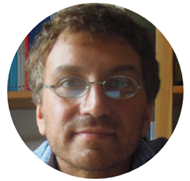
Francesco Vacchiano
The social life of phosphates. Work, health and environment in a Moroccan extractive territory
Department of Humanities
The recent theorization concerning the Anthropocene compels us to challenge established dichotomies like human and non-human, material and immaterial, biological and geological, life and non-life. Phosphorus is a fundamental element for life, as well as a powerful pollutant able to threaten life itself. It is stored in sedimentary rocks called phosphorites, which represent the legacy of past lives for the future of life on Earth. However, the intense extractive activity aimed at providing fertilisers to high-input agriculture is severely endangering the environment both in sites of extraction and usage. Phos.life addresses the phosphate commodity-chain and the relations between human beings and phosphates in Morocco from an anthropological point of view. Morocco sits on the estimated biggest reserve of phosphates in the world and is home of the largest phosphate mining company and manufacturer in the world. The objective is to investigate the social dynamics connected to extraction, transport and processing of phosphate rocks in the country, paying particular attention to: 1) labour organisation; 2) health; 3) environment. Gender relations are considered transversally to those domains. The project aims to follow the phosphates from extraction to international shipment and it is carried out through an ethnography of the social relations that characterise the extractive circuit. The research is meant to give a contribution to a new reflection on sustainability in the field of fertilisers production and aspires to elaborate a new theoretical, methodological and narrative framework to address environmental and societal concerns regarding resources. The initiative is aimed at laying the groundwork for a larger, multi-sited, comparative study on the ‘phosphate archipelago’ to be proposed for funding in the future.
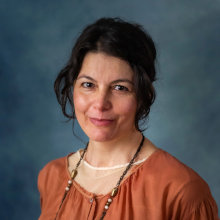
Chiara Branchini
A Signing Grammar. Towards a translation of A Grammar of Italian Sign Language into LIS
Department of Linguistics and Comparative Cultural Studies
Until very recently, European Deaf communities lacked descriptive grammars of national sign languages. Such loss has had a negative impact on educational programs directed to deaf students, as well as on training programs for professionals working with the Deaf. The SIGN-HUB project funded by the European Union (Horizon 2020, 2016-2020) partially filled that gap by producing digital grammars of 7 sign languages. Among these, the grammar of Italian Sign Language (LIS) produced by Ca’ Foscari University of Venice and the University of Milan-Bicocca, partners of the European project, is the most complete. As required by the EU, the grammar was written in English. While this guarantees a large disclosure among the international linguistic and non- linguistic community, it clearly represents a limit for its accessibility within the national borders. In order to overcome such limitation, it was translated into Italian in 2022. A further, more challenging and crucial, step for its accessibility isits translation into LIS to enable the Italian Deaf community to access it in their L1. The main aim of the present research is the selection of the most representative and fundamental sections of theLIS grammar and their translation into LIS. It will be the first comprehensive digital grammar of a sign language entirely produced in sign language. The project will involve the participation of an international team of linguists already partners of the past SIGN-HUB project, who will be in charge of outlining a protocol for grammar translation from the written spoken language into the sign language. Under this respect, the translation of the LIS grammar into LIS will lead the way, by yielding the necessary competences and experience that will allow the international team to present a wider project involving the translation of more grammars in appliance with the accessibility guidelines released by the European Union.
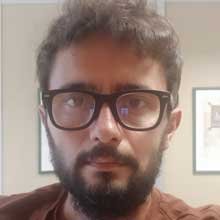
Maurizio Busacca
COCO – interdisciplinary research on the microphysics of COnflict in COllaborative spaces
Department of Philosophy and Cultural Heritage
The COCO project innovatively investigates coworking spaces (CS) through the unexplored perspective of the conflict. While existing research primarily considers collaboration as the principal catalyst for innovation, social, and business opportunities in CS, the COCO project treats conflict as a central theme, scrutinizing relational, economic, and emotional processes. This research project posits that understanding conflicts, reflective of profound social, economic, and political tensions within and external to CS, can provide insightful revelations about their functionality and potential for social innovation. Thus, the latter understanding may contribute to shaping CS experiences towards a more sustainable path. Engaging a team of seasoned researchers from Eutopia universities, the project aims for scholarly outputs and lays the foundation for substantial future research. The anticipated collaboration with international CS networks and local governments positions the project to influence policy-making and design and management strategies in CS.
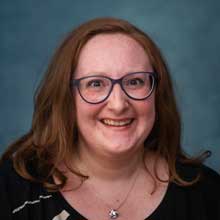
Daniela Cesiri
Food-Related Communication for Children in English: A Multimodal and Socio-Cultural Investigation
Department of Linguistics and Comparative Cultural Studies
Linguistic and communication studies have seldom considered the characteristics of food-related discourse involving, and addressed to, children. The only exceptions are a few studies which consider only the consequences of social media in the communication about food risks to children and youths. What is missing in the state of the art seems to be a broader perspective that considers communication about food targeting children not only from a media perspective but also from the viewpoint of brands specialised in baby food, or cookbooks/food blogs for children, or from institutions that inform parents, and provide guidelines, about a correct diet for the children. The project aims to fill this gap by investigating food-related communication in English addressed to children. The goal is the investigation of the verbal and visual strategies used in specific genres through which food-related communication happens. The project categorises these genres in three typologies: 1) ‘technical’ texts, including cookbooks and cookery manuals, domestic manuals, and recipes; 2) ‘commercial’ texts, including advertisements/commercials published in leaflets, newspapers, TV, and social media; 3) ‘institutional’ texts that include printed and/or booklets and leaflets in which international institutions (the European Commission, the World Health Organisation, the Food and Agriculture Organisation of the United Nations, and UNESCO) inform parents and professionals through guidelines concerning the correct nutrition of children. The genres will be collected in a corpus that will be investigated using corpus linguistics, (critical) discourse analysis, and multimodal analysis methods of investigation to account for the linguistic and extra-linguistic factors shaping nutritionrelated communication for children.
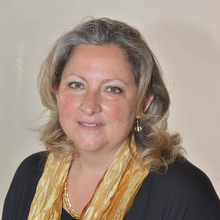
Francesca Rohr
Women's Oratory in the Roman world: the gender Dimension in ancient Speeches (8th BCE – 1st CE)
Department of Humanities
The project sets out to investigate the political speeches attributed to Roman matrons between the monarchic and early imperial periods. It focuses on a communication practice from which the mos maiorum excluded women: indeed, by tradition, they did not participate in the institutional life and, therefore, political communication. However, ancient sources report instances of Roman women who spoke out in political settings. The topic envisages an interdisciplinary approach, that is, expertise in ancient historiography (sources of speeches), oratory (the genre of speeches), political history (ideological context of reference), and history of women (speakers); it also encompasses a cross-temporal approach, which enables us to outline the origin and development of this practice as a recurring one between the middle Republic and early Empire. On the other hand, legends dating to the monarchic and early republican periods attest to the making over time of models of behaviour, which legitimise similar instances in later ages. The aims of this project are four-fold: to challenge the role of women's political speeches in the narrative structure of historiographic texts; to identify the peculiarities of female political communication compared to male ones by considering oratorical techniques and themes; to investigate elite culture, its political implications, and the elaboration of reference models, especially through the lens of gender history; to contribute to a better definition of female identity in the Roman world. The research builds on the conviction that social and cultural phenomena operating in the Western culture have their roots in the ancient world. The project is in line with the EU Gender Equality Strategy 2020-2025 with respect to equal opportunities, women's emancipation and, more specifically, the goal of achieving gender balance in decision-making processes and politics.
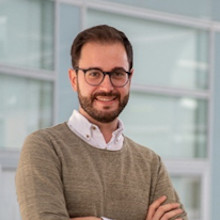
Alessandro Silvestri
Electroactive and bio-responsive inks based on modular and degradable 2D electrocatalysts
Department Molecular Sciences and Nanosystems
The desire to improve the standards of healthcare, food safety, and environmental monitoring all over the globe is the leading impulse behind the development of transient and disposable sensors. These are sensors designed for short-term or single-use applications, after which they can be easily and safely disposed of with a minimum impact on the environment. Therefore, environmental sustainability is a fundamental aspect to consider when designing disposable sensors, to not aggravate the problem of electronic waste (e-waste). A change in the paradigm must be done: the traditional conductive and semiconductive materials must be substituted with more sustainable ones. The materials for future electronics must answer some key aspects such as recyclability, low toxicity, degradability, and reduced use of precious metals. In this context, synthetic, natural polymers and 2D materials (2DM) are interesting candidates to achieve environmentally sustainable electronics. Based on covalent organic framework (COF) chemistry, this project aims to synthesize a 2D electrocatalyst tailored as an efficient transducer in amperometric biosensors. The building blocks composing the COF will be carefully designed to cover all the functions required for electrochemical sensing: electro-catalytic activity, conductivity, solution processability, possibility to post-functionalize it with receptors. Moreover, Schiff-base chemistry will be used to link the building blocks, to exploit its liability in an acidic environment to obtain a COF with programmable degradability. To have a solution-processable material, the electroactive COF will be exfoliated in the liquid phase and the obtained inks will be used to fully inkjet-print transient electrochemical paper-based analytic devices (e-PADs). Finally, the analytical performances of the e-PADs toward glucose and cholesterol detection will be investigated.
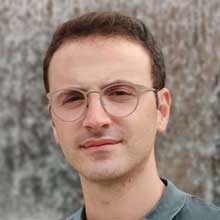
Domenico De Fazio
PHOBIO - PHOTODETECTORS FROM BIO-BASED CARBON DOTS AND 2D MATERIAL
Department Molecular Sciences and Nanosystems
One of the main challenges in optoelectronics is to adapt device architectures realized on rigid substrates to the framework of novel technologies realized on flexible or biodegradable substrates.
Bulk materials such as silicon, germanium, and group III-V compounds, work remarkably well to efficiently detect light at wavelength spanning the ultraviolet (UV), visible (VIS), and near-infrared (NIR) optical ranges on rigid platforms. However, their brittleness and high resistance to degradation, make their use impractical for flexible and transient (opto-)electronics, leading to the pursuit of alternatives coming from the world of nanomaterials. 0D carbon dots (CDs) are typically < 10 nm in lateral size, they can adapt to any substrate and are soluble in water.
2D layered materials (2DMs) have an elastic strain limit at least three times that of bulk semiconductors and disintegrate quickly in water or any other substance in absence of mechanical support. Additionally, being extremely sensitive to perturbations of their conductance, 2DMs have proved to be highly efficient for photodetection.
In this project, we will combine the potential of CDs, produced from a variety of waste sources, and 2DMs, to realize efficient flexible and transient photodetectors. CDs will be deposited on the surface of 2DMs such as graphene or molybdenum disulphide to function as light absorbers in a wavelength range which we aim to expand from UV to NIR for a broadband response. Absorption of light in CDs will, in turn, promote the transfer
of photo-excited charges to the 2DM layer, modifying their conductance, which enables light detection.
The final goal of the project is several-fold. Our investigation of CDs/2DMs systems will be focused on the realization of prototype broadband photodetectors for flexible and transient optoelectronic applications. This may however also lead to the discovery of fundamental physical phenomena due to the interplay of CDs and 2DMs.
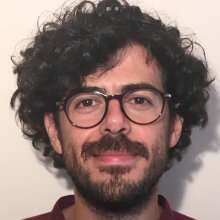
Paolo Musolino
DOMINO - DOMAIN PERTURBATION PROBLEMS AND INTERACTIONS OF SCALES
Department of Molecular Sciences and Nanosystems
The study of the dependence of a property of an object upon its shape is a very old problem. A ubiquitous task is to optimize the shape of an object in order to reach the highest efficiency both in pure mathematics and in applications. The many questions connected to the search of optimal shapes led to the development of new mathematical subjects: Shape Optimization (SO) and Topological Optimization (TO). To study a certain functional describing the properties of an object in the frame of SO, it is important to understand the dependence of the functional upon Regular Perturbations of the domain representing the object. TO aims instead at optimizing the shape functional by making small perforations in the domain. A fundamental tool is then Asymptotic Analysis that provides asymptotic expansions describing the effect of Singular Perturbations on the considered functional. In the DOMINO project, we will address challenging problems in these areas by means of the Functional Analytic Approach (FAA), a method developed in the last decade by the PI and his collaborators.
The accomplishment of the project will deepen the understanding of singularly or regularly perturbed, nonvariational, and nonlinear boundary value problems by implementing the innovative methods of the FAA and will show concrete applications to problems coming from continuum mechanics and material engineering. The theoretical results obtained in the project will stimulate the future development of new research directions. The expected results cover: a) development of New Techniques, b) solution of Pure Mathematical problems, c) solution of Applied Mathematical problems with possible outcomes for Real-World problems, d) overcoming difficulties of standard approaches and to complement those with the FAA. The final goal is the realization of a complete theory based on the FAA which will represent a fundamental tool for the analysis of problems in SO and TO at a theoretical level and in view of applications.
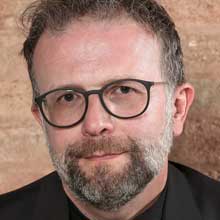
Fabrizio Panozzo
DEXTER - DE-STEREOTYPING TOURISM. PLACEMAKING WITH LOCAL CULTURES
Department of Management
Touristic destinations tend to fall victim to stereotypes and this, we argue, has important, yet only marginally investigated, consequences on the sustainability of tourism and on the livelihood of local communities.
Stereotypes generate easy-to-consume images and stories that by definition are meant to expand the volumes of consumption rather than the quality of the experience. This project would like to explore the relationship between stereotypes and sustainability incorporating one of the fundamental tenants of social media marketing: the promotion of touristic destinations is largely a matter of stories, pictures, and people. Dexter tackles this same combination alerting on the risk of unsustainably it entails. Therefore, a different combination is proposed, one in which pictures, stories, and people are, at least temporarily, free from the necessity of explicitly enhancing the commercial attractiveness of the touristic destination.
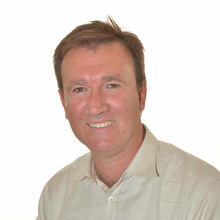
Stefano Riccioni
OSCHLOP - OBSERVING SOUTH CAUCASUS’ HISTORICAL LANDSCAPE: AN OPEN PHOTO LIBRARY
Department of Philosophy and Cultural Heritage
In Venice, there is a valuable and unknown collection of photographs of the cultural heritage of the South
Caucasus’ taken in the Soviet period by a group of eminent scholars and neglected by current scholarship. The OSCHLOP project aims to critically rehabilitate this vital archival resource, making it available to contemporary researchers by transforming it into an open-access digital photo library. In so doing, the project will reevaluate the content of the archive, shedding light on the historical landscapes (both natural and monumental) of the South Caucasus region and the history of Western archeology in the Near East inscribed in the history of the archive itself. Applying both practical and analytical methodologies to digitizing and analyzing the archive, the OSCHLOP project will open up new research frameworks considering the role of gender and international relations in the construction and preservation of Near Eastern cultural heritage in a Western academic context while strengthening and rebuilding the great legacy of the study of Eastern Christian cultures in Venice
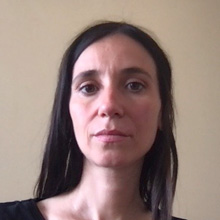
Giulia Rispoli
NUCLEARANTHROPOCENE - NUCLEAR WINTER: BIOSPHERE MODELING AND INTERNATIONAL GOVERNANCE
Department of Philosophy and Cultural Heritage
After the Second World War, the scientific collaboration between scientists of the Western and the Eastern bloc has taken place in several areas, and exceptionally in the study of the biosphere and the global environment. Since 1972, the year of the Stockholm Conference on the Human Environment, there has been a proliferation of initiatives, international agreements and scientific programs aiming to analyze the Earth as a complex biogeochemical system put in serious danger by human activities.
In this context, a relevant research program will emerge from the collaboration of North American and Soviet geophysicists on global biosphere modelling, leading in the early 1980s, to the Nuclear Winter theory. According to this hypothesis, the prolonged use of nuclear weapons would cause global cooling and the darkening of the atmosphere with catastrophic effects, which would alter the biological processes and the geological components of the planet, steering it toward an unprecedented state in Earth history. This research contributes to the historical and epistemological foundation of the Anthropocene theory by examining the context in which the collaboration on Earth system modelling for the nuclear winter took place, and how it ignited the discussion – in different realms of knowledge and culture – on the evolution of our planet toward a new geological stage.
Since the main contributions to this awareness came from collaboration of scientists from the US, USSR and Europe in the tense times of the Cold War (1982-1986), the research will resort to an innovative methodology based on transnational history and diplomacy, governance and archival research.
Positioned at the intersection of history and culture, science and technology with geopolitical and environmental affairs, this research would allow to explore the manifold dimensions of global science cooperation on the biosphere and its entangled relations with policy making in an international and transnational context.
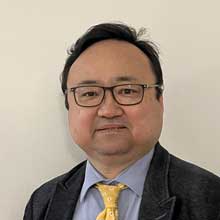
Jong Chol An
IL and Korea - From European International Law to Asian One: Korean Experience, 1880s-1940s
Department of Asian and North African Studies
Korea has actively participated into the so-called International Society, particularly after World War II. For example, Republic of Korea together with Israel was born with the resolution of the United Nations in 1948. When North Korea invaded South Korea in June 1950, the United Nations dispatched UN army to Korea, an army that was composed of 16 countries. Even Koea voluntarily sent UN peacekeeping missions to several places in the world since the end of the Cold War. Furthermore, Mr. Ban Ki-Moon, was elected in 2006 as General Secretary of UN with 10 year tenure. Thus, it is not rare to see that some Koreans are actively working in international organizations. It shows that Korea is integral part of international society.
However, as is well known, current international law was a creature of European nation state systems back to 16th century, though East Asia also had invented some customary law in its regional order. European world order was expanded to all over the world. Thus, the late 19th and early 20th century was the period when all the world was carved by international law, sometimes with a form of sovereign states or colonies. Korea became Japanese protectorate in 1905 and its colony in 1910, so that traditional world order which was tied to Chinese World Order was totally shattered. Thus, scholars have not paid attention to Korean understanding of international law, which they believe it was the European or western international law. Even if they focus on areas other than European countries, they tend to focus on primarily China and Japan. Even if scholars deals with Korea, they tend to a just pre-condition before Korea became an independent state in 1948. According to this conventional wisdom, Korea formally became a member of International Society at last in 1948, an order that was related to liberal world order, a Kantean one. Thus, I believe that this project contribute to a new understanding of this topic: international law and Korea.
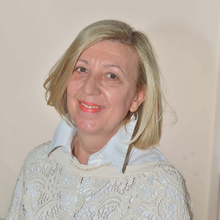
Claudia Antonetti
MALIWI - Social, ritual and ceremonial use of wine in the Gandharan area, from the Achaemenids to the Kushans
Department of Humanities
The attitude of ancient Greek historiography and ethnography towards the use of wine among the ancient Indians swings between two stereotypical approaches, excess and ignorance, which contribute to define primitive and/or utopian civilizations. Modern debates has for a long time focused on the Dionysos-symbolism which is highlighted by our sources in the context of Alexander’s conquest of India, and especially of Nysa, but it is time to change perspective (towards an intra-cultural approach). In fact, Alexander's early historians also left important geographical descriptions of the Indus Valley and its crops, while historians once neglected such as Curtius Rufus left important information on agriculture, urbanistic features, and local society. In the sources there is no shortage of information on the use of wine in India, while archaeological research has brought to light incontrovertible evidence of complex vinicultural techniques and also of the oldest known alcohol distillation processes. The core of these discoveries lies in the Gandharan area (the North-West of the Indus Valley and the Kafiristan): here, and in particular in the Swat Valley, the so-called 'Dionysian scenes' that decorate the first Buddhist temples (stupas) and the luxury objects of the Saka and Kushan aristocracies, allow us to glimpse the particular 'symposial' uses of a multicultural elite inspired by Greek customs while profoundly transforming them. The need to study in the long period, from Achaemenid to Kushan rule (VI BC-III AD), the changes, overlapping and métissage of cultures in the Gandharan area through the spectrum of the culture of drinking in an interdisciplinary perspective is an urgent desideratum of the research; the feasibility of the project is guaranteed by the collaboration of specialists in the various methodologies identified as necessary (history, archeology, ethnography, etc.).
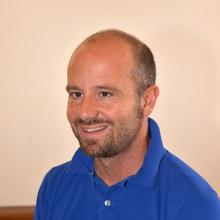
Lorenzo Calvelli
SaInAT-Ve - Sacred Inscriptions from the Ancient Territory of Venetia
Department of Humanities
This project aims to investigate the interaction between writing and religion in ancient north-eastern Italy by adopting an interdisciplinary and cross-temporal approach. Our geographical span will cover the area described by Livy as the «Venetorum angulus» (Liv. 5.23), which was later included by Augustus' administrative reform in the tenth region of Italy. Cults and rituals will be addressed through the lens of epigraphy to understand their role in promoting the religious and political integration of indigenous societies into the Roman world. Our dataset will comprise a range of epigraphic documents from a variety of indigenous cultures (Celtic, Raetic, and Venetic), as well as a large body of so-called 'sacred inscriptions' written in Latin, ranging from the earliest contacts of the Romans in north-eastern Italy to the full integration of local communities into the Roman political system. (3rd century BCE - 1st century CE). The project's acronym, SAINAT, notably alludes to the Venetic form Sainat-, a highly debated divine epithet, through which several Venetic inscriptions identify the role of some of the most important local deities.
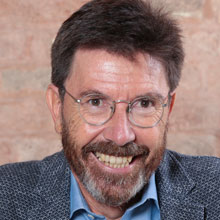
Agostino Cortesi
RESSA_ROB - Requirement specification and static analysis of robotic software
Department of Environmental Sciences, Informatics and Statistics
Robotic software couples together embedded software running on the device, middleware software connecting several devices through a local network, and cloud software services running on remote machines connected through internet. Such a paradigm, known as the Internet of Things (IoT), is becoming pervasive: it is estimated that billions of IoT devices are operative everyday worldwide. Being usually deployed in safety-critical domains, the assessment of the functional safety and security of IoT software is mandatory to enable the adoption of these solutions on a large scale. This is particularly critical in the Robot Operating System (ROS) context, where highly configurable robots are built by integrating third-party components.
Sound static analysis (that is, the analysis of software through mathematical models that over-approximate all its possible behaviors) has already proved to be effective in the context of safety-critical embedded systems. However, its application to robotic and IoT systems has been so far quite limited. The main goal of this project is to study, formalize and develop an end-to-end approach for the specification of the functional and security requirements of robotic software systems based on ROS, and their validation through static analysis techniques, also in collaboration with some industrial companies.
This project will have as actors the Software and System Verification team of the Department of Environmental Sciences, Informatics and Statistics of Ca’ Foscari lead by prof. A.Cortesi (https://ssv.dais.unive.it/), and four Indian research groups lead respectively by prof. N.Chaki (Calcutta University, Kolkata, West Bengal, India), prof. Novarun Deb (IIIT Vadodara, Gujarat, India), prof. Raju Halder (IIT Patna, Bihar, India) and prof. Amit Mandal (SRM University, Mangalagiri, Andhra Pradesh, India).
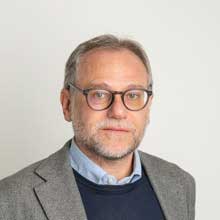
Giovanni Favero
WESTEN - Towards a Connected Business History of Europe: The Westen Group
Department of Management
The ongoing debate on deindustrialisation (and delocalisation) is mostly focusing on Western Europe in the last half century. Adopting a longer historical and a broader geographical perspective may highlight many different change paths affecting industrial settlements in 20th century Europe, spanning from industrial reorganisation to heritage conservation, and from reconversion to abandonment.We use here as a natural experiment the case of the metal enamelling factories of the Westen Group, scattered through small cities all over Central, Eastern and Southern Europe during the 20th century. We follow the business and financial activities of the family and the events affecting the factories and the local communities around them after their nationalisation or dismissal. The common origin allows a comparative approach to the effects of different historical changes on similar businesses, but it also highlights the persistence of connections among them. At the centre of the narrative are not the political and social consequences of the deindustrialisation or its causes, but rather the process of industrial change in different areas, the specific entrepreneurial and political responses to the crisis of the industry as a dialectic transformation which does not necessarily have winners or losers.
The focus is on the local response, whether positive or negative, at political and economic level, but seen as part of a process involving different localities in the European continent.
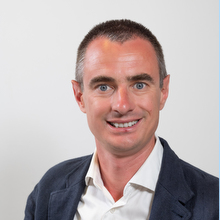
Pietro Ferrara
SADS - Static Analysis for Data Scientists
Department of Environmental Sciences, Informatics and Statistics
The advent of big data during the last decade revolutionized the world of software development. The novel figure of data scientists arised in the job market: these professionals usually need knowledge about statistics, computer science, and the field concerning the type of data they deal with (e.g., finance). Therefore, data scientists are not expert software developers, and they often obtained bachelor or master degrees in different scientific fields (e.g., in statistics, physics, or mathematics). The main goal of this project is to develop an effective tool based on static analysis to help data scientists developing Python scripts for data processing purposes.
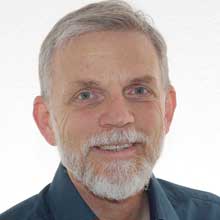
Patrick Heinrich
LESWE - Language Endangerment and Subjective Wellbeing
Department of Asian and North African Studies
Indigenous languages are more important for their speakers and society than has been previously thought. Most countries have established monolingual language regimes to create a sense of unity among their linguistically diverse population. Japan is a prototypical example. The effect is that indigenous languages – in Japan Ainu andRyukyuan – have become endangered. We understand today that monolingual language regimes are problematic. Pilot studies among Aborigines in Canada and Australia show that linguistic assimilation that leaves no place for indigenous languages coincide with higher-than average mental and physical problems (e.g. depression, obesity). These findings prompt the following research question: To what extent does the language people know and speak affect their mental and physical wellbeing? To answer this question, this project studies language and wellbeing comparatively in three endangered language communities in the Ryukyus. The Ryukyus provide for a first compelling case as they are in themselves diverse, but the approach proposed here is replicable to all modern societies. This project adds a new perspective in the study of multilingualism that has implications for minority language education policies and for language maintenance and revitalization practices.
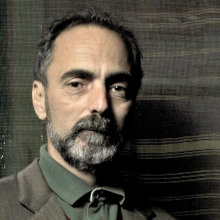
Luca Maria Olivieri
LASER CHIP - Late Antique Swat Ecology and Resilience: Climate and Habitat in Interfacial Periods
Department of Asian and North African Studies
The LASER CHIP project is a multidisciplinary pilot study focusing on the Late Antique period of the NW South Asia and the Hindukush-Karakoram piedmont. The study area is the Swat Valley in Pakistan, which lies at the crossroads of three major climatic and cultural zones: NW South Asia, the Himalayas, and Central Asia. The project aims to investigate the forms of the late agrarian crisis as well as the decline and resilience of religious communities, important macro-phenomena revealed in Swat and surrounding region by unequivocal archaeological data and textual sources. The agrarian collapse recorded in Buddhist sources between 550 and 660 AD can be linked to the global sudden climate crisis (LALIA hypothesis). The project aims to acquire concrete data from direct sampling in soils and other fields, with a focus on the chronology of the first millennium CE. Study of new data at the botanical and molecular level will make it possible to assess climate fluctuations throughout the first millennium CE.
The project will test whether the LALIA climate hypothesis, which covers the entire Eurasian shelf, can explain at the microclimatic level the crisis of agro-production, the decline of Buddhism and the resilience of the feudal system associated with Brahmanical communities. As outcomes of this project, we expect to obtain a better understanding of the role of past climatic variability in the Hindukush-Karakoram history, as well as to propose a new integrated model to explain the phases of the late antique crisis and the related human response.
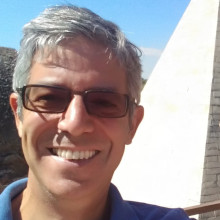
Simone Piazza
ME.MO.R.I.A. - MEDIEVAL MURAL MOSAICS IN ITALY: REDISCOVERING IN ABSENTIA (MATERIAL, FIGURATIVE AND WRITTEN TRACES)
Department of Philosophy and Cultural Heritage
The project ME.MO.R.I.A. focuses on the study of Medieval wall mosaics that have disappeared over the centuries but are known through documents. During the Middle Ages, the "opus musivum" became one of the most soughtafter artistic media among high-ranking, religious or lay patrons. Wall coverings were particularly popular for both aesthetic reasons (the light and glittering effect of the tesserae) and symbolic ones (their pure and enduring colours lent themselves to sacred celebrations). To this day, there is no research on the memory of lost mosaics as a global phenomenon, with a focus on the following issues: documentary analysis (inscriptions, chronicles, ancient drawings, fragments, etc.) and reliability of the sources; comparative examination of the events that led to the material loss of the mosaic contexts; interrelations between the lost and the surviving heritage. The project ME.MO.R.I.A. will adopt an interdisciplinary approach involving different specialists (Modern-Art historians for the drawings, philologists and palaeographers for the written sources, graphic designers for virtual reconstructions, chemists for the analysis of fragments, etc.). The programme’s operational goal is to set up a database and a series of products to visualise what has been lost (2D and 3D reconstructions, map projections, videomapping).
In the framework of SPIN, for practical reasons, we chose to confine our research to the Italian territory, which, according to a preliminary count, already includes a considerable number of cases (about 70). The significant number of examples in the rest of the Euro-Mediterranean area suggests the possibility of expanding the project to examine this topic as a global phenomenon in the near future, which would entitle the project to receive further European and international aid.
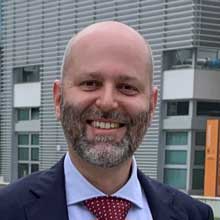
Federico Polo
TIDE - Therapeutic and Illegal Drugs’ Electrochemiluminescent Detection
Department of Molecular Sciences and Nanosystems
Drugs, antibiotics, pesticides, fertilizers, food additives are among those low molecular weight chemicals (typically < 2 kDa), often referred to as small molecules, of particular interest as they are conceived and, nowadays, massively produced and used to improve the quality of life. However, they can also pose serious risks to our ecosystems and health when not properly used, stored, or disposed. The detection of small molecules has become very important and has developed a growing interest, due to their increasing production and use for many applications in different fields including public health, environment, and food.
The idea behind the proposed research project relies on the experiences acquired in recent years, and on our recent findings concerning therapeutic drug monitoring (TDM) in oncology. The aim of the research proposal TIDE is twofold. (i) We will develop a biosensing platform for the detection and monitoring of therapeutic drugs employed in the treatment of cancer, which relies on specifically designed aptamers as the synthetic receptors and on the surface plasmon resonance (SPR) and electrogenerated chemiluminescence (ECL) as the detection tools. (ii) We will concomitantly translate the technology developed for the therapeutic drug to develop new tools enabling the detection of illegal drugs.
SPIN funding will help us developing the project, strengthening well-grounded collaborations, and establishing new ones to extend our international network in view of applying to national and international funding. Its success will translate in a ground-breaking technology that will significantly improve the quality of life of oncological patients, providing fast, portable, and reliable diagnostic tools and thus implementing effective and personalized strategies for therapeutic treatment at the point of care, and will also help preventing the abuse of illegal drugs, providing enhanced and reliable detection strategies and tools.
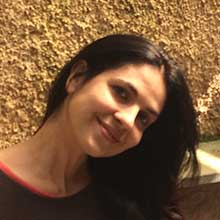
Marta Strani
SITHYPE - Stability Issues in the Theory of Hyperbolic and Parabolic partial differential Equations
Department of Molecular Sciences and Nanosystems
Parabolic and hyperbolic reaction-convection-diffusion equations are broadly used to describe common phenomena such as pattern formation and front propagation in biological, chemical and physical systems; depending on the assumptions, these equations describe different models in mathematics and physics and find applications in neurophysics, biophysics, population genetics, and, especially, in the process of phase separation of fluids and/or metals. As a matter of fact, there are several aspects of their dynamics that are still far from being clear: the aim of the project SITHYPE is to share new light on some open problems related to the asymptotic dynamics of such equations, and it is expected to exploit the role of different variations in the character of the PDEs under consideration in the appearance of phenomena related to the long time behavior of their solutions. We will focus in particular on the study of the following problems:
- Studying the long time dynamics of solution to convection-reaction-diffusion equations in presence of nonlinear diffusions or hyperbolic terms;
- Regularizing strongly unstable hyperbolic PDEs with viscous or dispersive terms, showing a time delay in the instabilities (local-in-time well posedness);
- Investigating how a perturbation in the domain changes the asymptotic behavior of the solutions to a parabolic PDE.
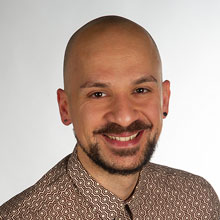
Francesco Valentino
VALORBIO - VALorization of urban ORganic waste into BIO-products
Department of Environmental Sciences, Informatics and Statistics
The VALORBIO project will demonstrate the pilot-scale production of volatile fatty acids (VFAs) and polyhydroxyalkanoates (PHAs) from food waste (FW) in a successfully operating biorefinery, where biogas production is also foreseen.
The VALORBIO process establishes two technology lines: a) the VFAs line where the FW undergoes an anaerobic acidogenic fermentation to be converted into the building blocks, VFAs; 2) the PHA line following the previous line, where aerobic stages for converting the VFAs into PHA take place and the final PHAs are extracted and stored. The residual stream from both lines will be further recovered - using the existing facilities available at the pilot platform - for biogas production, establishing a zero-waste process following Circular Bioeconomy principles.
The technology has been developed in the EU project RES URBIS starting from FW and sewage sludge and producing PHA with more than 90% purity. Supporting the achievement of past results, VALORBIO needs to operate for process optimization, especially for fermentation process control (pH and VFA distribution), global PHA yield (possibly higher than 10% w/w) and PHA extraction protocol.
A Life Cycle Analysis will be also assessed, together with the investigation other aspects which are attracting increasing interest: the PHA degradability (end-of-life) and microplastics fate and degradation through the whole developed biorefinery.
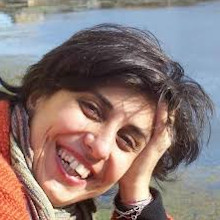
Chiara Certomà
DSI4UG - Exploring Digital Social Innovations ecosystems and Urban Governance models in a quadruple helix perspective
Department of Management
The massive movement of digital social innovators (including digital social entrepreneurs, hackers, social mappers, citizen scientists, crowdfunders, etc.) is advancing disruptive forms of collective agency that mushrooms and infiltrates social organizations and government, research and business institutions. This gives raise to inedited governance configurations and processes, notably in the urban context. DSI4UG proposes through a Grounded Theory approach a Europe-wide analysis of the mutual impact of Digital Social Innovation (DSI) and Urban Governance, by creating awareness on this current revolution and exploring the relationships between different stakeholders of the quadruple helix innovation model, in order to find out the main assets that support or inhibit the emergence of DSI-supporting ecosystems.
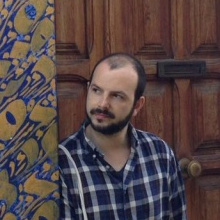
Francesco Piraino
eGoSURF - Gender, Sufism, and Religious Freedom
Department of Asian and North African Studies
Sufism, the spiritual tradition in Islam, despite a rigid conceptualisation of the secular-religious division is now experiencing a period of renewal, with charismatic leaders attracting new disciples from different social and cultural backgrounds. Global Sufi leaders and public figures, both in Europe and North Africa, are actually promoting an open debate about religious and social norms on gender, stressing the importance of religious freedom and the adherence to Islamic values, women’s agency included. This project will analyse how global Sufis conceptualise freedom and adherence to Islamic values as regards gender norms, and how they embody values, norms, and relations.
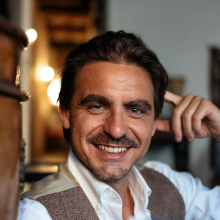
Federico Tomasello
STaR Map - States of Radicalization: Mapping New Semantics of Political Violence in Europe
Department of Philosophy and Cultural Heritage
Over the last two decades the concept of radicalization has acquired a central position in terrorism studies and is nowadays a master signifier of the struggle against terrorism in Europe. However, the academic community is far from reaching consensus about what exactly the term ‘radicalization’ entails. The StaR-Map programme will articulate an in-depth exploration of this notion in order to develop new perspectives in the study of radicalization into political violence. The goal is to ‘push’ the idea of radicalization beyond the borders of terrorism studies in order to build up a new map of the several forms of radicalization into political violence that mark the present European landscape.
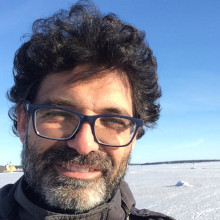
Alberto Vomiero
TEPV - Thermoelectric Photovoltaic Nanowires
Department of Molecular Sciences and Nanosystems
The project aims at investigating a new combined thermoelectric (TE)-photovoltaic (PV) effect in heterostructured nanowires, towards a new paradigm for sunlight exploitation. The concept is to tailor the electronic band structure of multi-shell nanowires (an external shell absorbing the visible part of the solar spectrum and a highly efficient TE material core able to complementary absorb the infrared sunlight - typically lost in almost all the different solar cell architectures); the PV cell will be in direct contact with the TE core and will promote charge transfer to it. An unprecedented increase of the figure of merit of the TE nanowire and of the power conversion efficiency is expected, towards the so-called “panchromatic” exploitation of solar radiation.
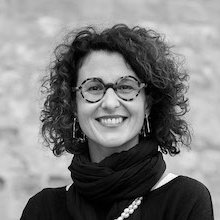
Alessandra Bucossi
RAP - Repertorium Auctorum Polemicorum
Department of Humanities
The RAP project aims to contribute to a better understanding of the development of the relationship between the Latin (Catholic) and the Greek (Orthodox) Churches between the ninth and the fifteenth century. The scholarly community still needs to ascertain the extent of the corpus of the literature inspired by the schism between the two Churches, the development of the polemic and their cross-influences, thus leading so far to biased or unreliable partial studies. The project will study, systemize and interpret the entire corpus of the Byzantine polemical literature, which will be presented in an online Repertorium hosted by the Pinakes database of Greek manuscripts and in a RAP website.
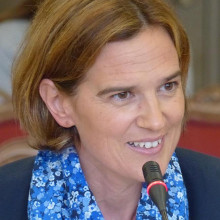
Paola Corò
LIBER - The King's Librarians at Work. Applying Machine Learning and Computer Vision to the Study of Scribal Marks on Cuneiform Tablets
Department of Humanities
Among the 30,000 cuneiform tablets that make up the famous Library of Ashurbanipal, a substantial number of literary and scholarly texts include holes placed on the surface alongside the written text and/or the edges. Different theories on their function have not led so far to a systematic study of these marks. The project aims at continuing a preliminary investigation that suggests the existence of different set of holes and a possible meaningful connection with the textual content of the tablets where they appear. The understanding of their genesis and function will also shed light on the procedures and mechanisms underpinning the Library's formation, its ordinary management by the king's librarians and the scribes’ work. The analysis will be carried out in partnership with the Dept. of Middle East of the British Museum and the Center for Cultural Heritage and Technology of the IIT.
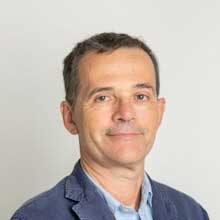
Marco Li Calzi
ECOGNITION - Economic choices under partial representations
Department of Management
The project studies how economic and social outcomes depend on “the mental models that individuals construct to make sense of the environment”. The research goals are both theoretical and applied: the primary theoretical goal is the understanding of individual and strategic decision-making when agents have different mental models; the primary applied goal is to advance the design of markets and organizations populated by agents with different mental models.
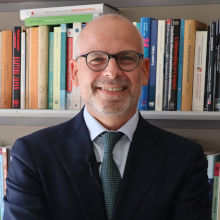
Francesco Zirpoli
NASM - The Emergence of New Industry Architectures for Sustainable Mobility
Department of Management
The project will investigate and map how and to what extent the diffusion and introduction of sustainable mobility technologies will result in a new business ecosystem and how this will impact on the articulation of the industry in terms of product architectures and division of labor within the value chain. The SPIN project will serve as a pilot study for an international comparative research. Starting from the systematic reconstruction of different technological scenarios, the project will focus on an accurate analysis of opportunities and threats for the various players currently operating in the car industry, and of how the emergence of technologies alternative to internal combustion engine can impact on the structure of the automotive supply chain.
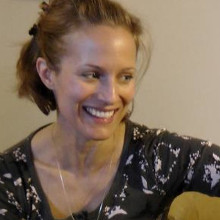
Petra Andits
Sexual Nationalism - Emerging sexual nationalism in the context of the “refugee crisis”: a comparative study between Western and Eastern Europe
Department of Humanities
This project is centrally concerned with the construction of Muslim Otherness and the legitimation of anti-migrant approaches through images and discourses of sexuality in Western and Eastern Europe, in the context of the current refugee crisis. This transdisciplinary research will compare the situation in Hungary, Poland and Latvia to their Western European counterparts and look at the ways in which such discourses travel and vary across different national contexts. The research will examine political and opinion-makers representative texts and pro- and anti-migrant social movements.

Nicola Di Stefano
CONSONANCE - tOward a multimodal theory of harmoNy. from pythagoraS tO NeuroscieNCEs, and back
Department of Philosophy and Cultural Heritage
In Pythagorean philosophy numbers are the principles of reality and abstract numerical relationships shape our perception of the world. This idea has been well exemplified in the domain of sound perception, where the combination of auditory frequencies in small-integer ratios results in a harmonious perception, i.e. consonance. To date, multimodal perception of consonance has however never been systematically addressed: this project aims to generalize the Pythagorean hypothesis, empirically investigating the role of simple vs. complex integer ratio intervals in different sensory modalities. CONSONANCE will lay the basis for a new comprehensive theory of perception that combines empirical results and methodologies with traditional philosophical aesthetics and will shed light on the neurobiological basis of consonance perception mechanism.
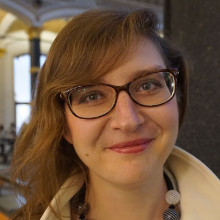
Tatiana Korneeva
iThread - Italian Theatre Reverberated: An Artistic Diaspora Across Central Europe in a Multilingual Context.
Department of Philosophy and Cultural Heritage
iThread explores Italian drama as a paradigm for understanding processes of knowledge transfer and arts-politics exchange across Western and Eastern Europe over the eighteenth century, in particular at the Russian, Austrian and other German courts. It brings together theatre and cultural studies, musicology, as well as digital technologies to address a rarely assessed corpus of plays, opera librettos and ballets that occupied a crucial position within the spectacle of absolutism across the European courts.
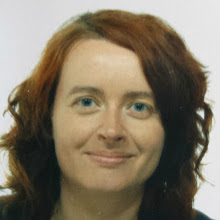
Elisabetta Giuseppina Lurgo
GloPrin- A global society of Princes. The Interplay between Trans-national, National and Local Politics and Identities in the 17th -18th centuries Europe
Department of Linguistics and Comparative Cultural Studies
What was, in fact, the influence of princely families on practices of power in dynastic centres? This project aims to analyze the expressions of authority and power of transnational princes through their activities at royal courts and governments, in international diplomacy and as local landowners. The challenge is to understand their importance in the broader context of European sovereignty and in the connections between transnational, national and local politics and to open a wider research on the political dimension of courtly sociability. The starting case study will be the princes of Carignan, simultaneously ‘princes du sang’ at the court of Savoy and ‘princes étrangers’ at the French court, between the 17th and 18th centuries.
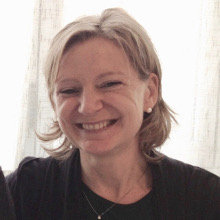
Marcella Maria Mariotti
NOLBRIK - No level-brick language learning: transformative language education, de-standardization of language teaching, and the relevance of glocal e-Learning AI systems in active citizenship formation
Department of Asian and North African Studies
Transformative education starts from the very community nearest to the students, which is the classroom, and aims at considering and respecting them as ‘active citizens’. IT & AI became an indispensable partner in de-standardizing teachers’ role and enabling learners and teachers to develop a critical social awareness. In order to help in fostering active citizenship and social cohesion and to overcome discontent and misunderstandings, too often leading to war and individuals conflicts, NOLBRIK project aims to demonstrate the feasibility of a level-free, social responsible, problem-posing transformative language learning and teaching, in and outside the classroom. Japanese language will be addressed as a case study.
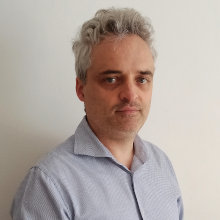
Flavio Rizzolio
TREAT-HGSEOC - Tumoroids as new REAl Time therapy for High Grade Serous Epithelial Ovarian Cancer patients
Department of Molecular Sciences and Nanosystems
High grade serous epithelial ovarian cancer (HGSEOC) is a heterogeneous and fatal disease that represents about 70% of ovarian cancer deaths, with a little improvement in overall survival in the last 20 years. Surgery and platinum-based chemotherapy are unsuccessful in eradicating ovarian cancer cells completely. This proposal aims to develop a parallel treatment between forefront tumor-on-chips derived from patient biopsies and HGSEOC patients to define the best personalised therapeutic regimen, in a period of time compatible with patients' survival. A biobank of human ex vivo 3D tumoroids derived from HGSEOC patients sensitive or resistant/refractory to platinum treatment will be developed.
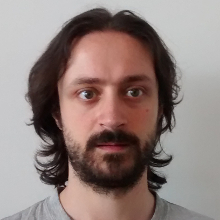
Flavio Romano
ThermoSimPro - A Thermodynamically Accurate Simulation Model for Proteins
Department of Molecular Sciences and Nanosystems
ThermoSimPro intends to develop a new amino acid-level coarse-grained model for proteins that will allow for qualitative and quantitative predictions for biological an nanotechnological applications. The main use for the model will be in the context of numerical simulations, allowing to tackle fundamental open problems, such as protein folding, and a vast array of questions regarding how protein assemble and what are their properties in solution.
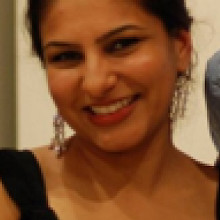
Zehra Zaidi
GENCLIMA - Gender responsive Climate Risk Analysis
Department of Economics
GENCLIMA will provide new insights on the form, scope and degree of climate risks experienced by women across various national contexts, sectors, income groups and socio-political settings. Using innovative interdisciplinary methodologies and integrated assessment models, it will generate new information on gender differentiated climate risks that provides innovative inputs for designing gender-sensitive adaptation and mitigation strategies at an international scale, improving disaster risk management practices, and updating socio-economic development policies.
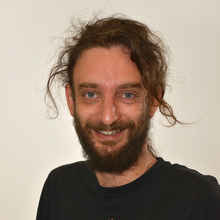
Dario Battistel
INSIDE- The Intimate Structure of the Italian Dark Earths: Environmental, Climatic and Anthropogenic Factors that Induce the Formation of the post-Roman Anthrosols
Department of Environmental Sciences, Informatics and Statistics
The overall goal of the INSIDE project is to formulate a novel hypothesis on the formation of the European anthrosol named ‘Dark Earth’: deposits (from waste discharge, wood degradation, changes in agricultural practices as well as extensive burning activities) formed during the urbanization process that took place after the decline of the Roman Empire. Its knowledge is pivotal for understanding the past urbanization process in a context of political unrest and high climate variability. The project will analyse in three areas (Padua, Verona and Como) the black carbon particles and determine the molecular composition of the organic matter with a special attention to the presence and the abundance of specific biomarkers that are potentially diagnostic for the soil formation dynamics, in conjunction with the archaeological, environmental and climatic context.
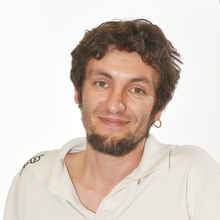
Marco Bortoluzzi
I COOL- Inexpensive COmplexes for Oled
Department of Molecular Sciences and Nanosystems
The proposal is based on experimental studies involving chemistry, materials science and light technology on light emission by new luminescent manganese and copper complexes of potential interest for advanced technology. The expected result is the syntheses of inexpensive advanced luminescent polymeric materials to be applied in frontier technological fields, such as efficient lighting devices, in place of currently employed materials based on more expensive elements.
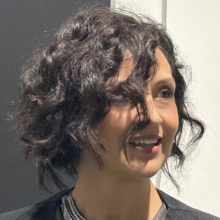
Susanne Franco
MNEMEDANCE - Memory in motion. Re-membering dance history
Department of Philosophy and Cultural Heritage
MNEMEDANCE aims at inquiring into the relationship between dance and memory to rethink dance history as a discipline that can make an impact also in adjacent areas of the arts and humanities. The project investigates the dancing body as a tool for remembering and archiving experiences and cultures, and movement as a strategy for preserving and transforming meaning. It also aims at questioning the canonical genealogies of artists and traditions that historians have often assumed without taking into account forms of removals, oblivion, or resistance. It analyzes as well the role of dancers and choreographers in the construction of collective knowledge and memories, their preservation, transmission, and accessibility.
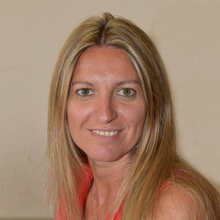
Francesca Masi
SPIDER - Science and philosophical debates. A new approach to Epicureanism
Department of Philosophy and Cultural Heritage
This project will examine science understood in Epicurean philosophy, both as epistemology (canonics) and as the science of nature (physiologia), and its dialogue with other philosophies (Academic, Aristotelian, Sceptic and Stoic) and sciences (geometry, astronomy and medicine). The aim is to explain in what way Epicurean atomism is capable of accounting for the most peculiar and complex cognitive and natural phenomena functionally to ethics. The project will involve a network of internationally renowned scholars to coordinate fragmentary textual discoveries, to ensure an innovative historical reconstruction of Epicureanism and of its polemical engagement with the other philosophical schools of its day.
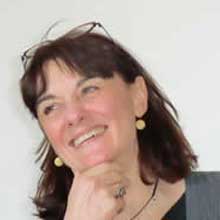
Eleonora Montuschi
TRUST IN SCIENCE: the pragmatic and ontic debates
Department of Philosophy and Cultural Heritage
This project will bring historians, scientists, and philosophers together to address pragmatic and ontic trust in science (including biomedical and social sciences) in tandem. It will reflect, in an interdisciplinary perspective, under what conditions trust is justified; to what extent radical change in science should undermine our trust in it; and when trust in science becomes excessive. The longer-term aim would be to develop a proposal for a multi-year research initiative on trust in science and society led by the Department of Philosophy at Ca’ Foscari, and involving historians, philosophers, and scientists at national and international level.
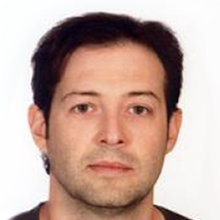
Marco Picone
AWExPharma- Assessing wild birds exposure to Active Pharmaceutical Ingredients
Department of Environmental Sciences, Informatics and Statistics
The aim of the project relies in assessing whether water birds of conservation interest nesting and wintering in the area of the Venice Lagoon are exposed to Active Pharmaceutical Ingredients (APIs). The focus will be on feathers collected from chicks and droppings released by both adults and chicks of waterbirds annexed in the Directive 2009/147/EEC, especially gulls, terns and waders. Feathers were chosen as tissue for the determination of accumulation of APIs since feather analysis is a non-destructive and ethically preferable techniques.
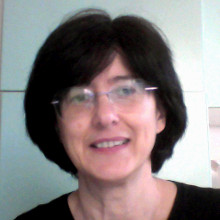
Elena Rova
FRAC-SISCANEA - From Relative to Absolute Chronology: Steps for Integrating the Southern Caucasus into Near Eastern Archaeology
Department of Humanities
The project addresses one of the main problems of archaeological research in the Southern Caucasus: the lack of an agreed relative chronology and periodisation, as well as of a reliable absolute chronology, which hinders a complete integration of the region into Near Eastern archaeology. One of the project's aims is to complete the work initiated by the "Georgian-Italian Shida Kartli Archaeological Expedition" of Ca' Foscari for obtaining a renewed, 14C supported periodisation of the Shida Kartli province of Georgia from the Late Chalcolithic to the Early Iron Age (4th-early 1st mill. BC).
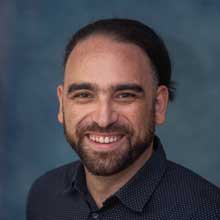
Giuseppe Sofo
TransKarib - A Research Project on Caribbean Translation Studies
Department of Linguistics and Comparative Cultural Studies
“TransKarib” is a project that aims at producing an encounter between researchers, professionals, and students in the creation and diffusion of Caribbean literatures in translation, with a focus on the possibilities offered by Digital Humanities applied to the practice, theory and study of translation. The project will benefit of Ca’ Foscari’s Centre on Digital and Public Humanities.
Last update: 04/12/2025
